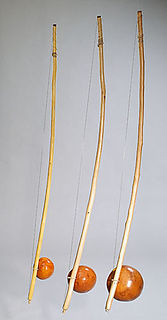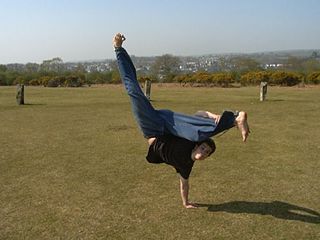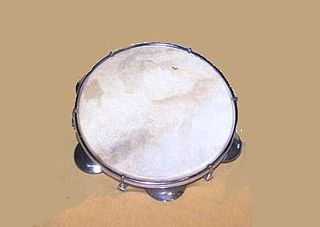 W
WCapoeira is an Afro-Brazilian martial art that combines elements of dance, acrobatics, and music. It was developed by enslaved Africans in Brazil at the beginning of the 16th century. It is known for its acrobatic and complex maneuvers, often involving hands on the ground and inverted kicks. It emphasizes flowing movements rather than fixed stances; the ginga, a rocking step, is usually the focal point of the technique. The most widely accepted origin of the word capoeira comes from the Tupi words ka'a ("forest") paũ ("round"), referring to the areas of low vegetation in the Brazilian interior where fugitive slaves would hide. A practitioner of the art is called a capoeirista.
 W
WThe Associação Brasileira de Apoio e Desenvolvimento da Arte-Capoeira (ABADÁ-Capoeira), in English translated as "The Brazilian Association for the Support and Development of the Art of Capoeira," is a nonprofit organization whose purpose is to spread and support Brazilian culture through the practice of capoeira. Founded in 1988 by Mestre Camisa, José Tadeu Carneiro Cardoso, ABADÁ is based in Rio de Janeiro, Brazil. It is one of the largest capoeira organizations in the world with over 41,000 members representing schools throughout every state of Brazil as well as 30 different countries. ABADÁ is distinguished from other capoeira organizations by its worldwide growth as well as its style, standards, and philosophy.
 W
WAn agogô is a single or a multiple bell now used throughout the world but with origins in traditional Yoruba and Edo music and also in the samba baterias. The agogô may be the oldest samba instrument and was based on West African Yoruba single or double bells. The agogô has the highest pitch of any of the bateria instruments.
 W
WThe atabaque is a tall, wooden, Afro-Brazilian hand drum. The shell is made traditionally of Jacaranda wood from Brazil. The head is traditionally made from calfskin. A system of ropes are intertwined around the body, connecting a metal ring near the base to the head. Because of this tuning mechanism the drum is sometimes known as 'Atabaque de Corda'. Wooden wedges are jammed between this ring and the body and a hammer is used to tighten or loosen the ropes, raising or lowering the pitch of the drum.
 W
WThe berimbau is a single-string percussion instrument, a musical bow, originally from Africa, that is now commonly used in Brazil. Originally from Africa where it receives different names, the berimbau was eventually incorporated into the practice of the Afro-Brazilian martial art capoeira, the berimbau leads the capoeiristas movement in the roda—the faster the berimbau is playing the faster the capoeirista moves in the game. The instrument is known for being the subject matter of a popular song by Brazilian guitarist Baden Powell, with lyrics by Vinicius de Moraes. The instrument is also a part of Candomblé-de-caboclo tradition.
 W
WCapoeira: The History of an Afro-Brazilian Martial Art is a book by Matthias Röhrig Assunção published by Routledge in 2005. The book is known for its insight into the far-reaching history of the Brazilian martial art known as Capoeira, and its complex cultural significance to Brazilian identity. It provides a series of in-depth debates on Capoeira, including what it actually is, where its true origins lie, and what it exemplifies. Additionally, it describes the evolution of Capoeira from its roots as it spread to different regions of Brazil in the 19th and 20th Centuries, and the rest of the world in the 21st Century, accepting a multitude of beliefs into a single divers culture. Throughout the book, Capoeira is also seen as a mechanism for racial desegregation.
 W
WAn L-kick, also called aú batido, is a movement in breakdancing, capoeira and other martial arts and dance forms. It is executed by throwing the body into a cartwheel motion, but rather than completing the wheel, the body flexes while supported by one hand on the ground. One leg is brought downwards and forwards in a kicking motion while the other remains in the air.
 W
WMaculelê is an Afro-Brazilian dance where a number of people gather in a circle called a roda.
 W
WA meia lua de compasso is a technique found in the martial art of capoeira that combines an evasive maneuver with a reverse roundhouse kick. It is considered one of the most powerful and efficient kicks of the art and one of its most iconic movements along with the rasteira. It is even considered that a capoeirista's general skill level can be determined on how hard and fast they are able to execute a meia lua de compasso.
 W
WIn capoeira, music sets the rhythm, the style of play, and the energy of a game. In its most traditional setting, there are three main styles of song that weave together the structure of the capoeira roda. The roda represents the most strict and traditional format for capoeira and is ideally suited for an introduction and discussion of the music. Though we may consider the music traditional, because it has been passed orally from one to the next until the early - mid 20th century when songs and rhythms began to be notated and recorded, there is no record of to what extent and exactly how the music has evolved over time. Capoeira's Brazilian heritage plays a heavy role in the way capoeira is perceived by its practitioners and understood at a subconscious level. It is a common feature of many Brazilian ethnic groups, for instance, as well as others throughout the world, that music is not so much a form of personal entertainment as it is a medium to bring about group cohesion and dynamic. Music in the context of capoeira is used to create a sacred space through both the physical act of forming a circle and an aural space that is believed to connect to the spirit world. This deeper religious significance exists more as a social memory to most capoeira groups, but is generally understood as evidenced in the use of ngoma drums, the berimbau whose earlier forms were used in rituals in Africa and the diaspora in speaking with ancestors, the ever-present term axé which signifies life force, the invocation of both Afro-Brazilian and Catholic spirituality, and certain semi-ritualized movements used in Capoeira Angola that bring "spiritual protection". The instruments are: up to 3 berimbaus up to 2 pandeiros 1 agogô 1 reco-reco 1 atabaque or conga Not every roda will contain all these instruments. Mestre Bimba, for instance, preferred only one berimbau and two pandeiros in his rodas, but there will always be at least one berimbau in any roda.
 W
WThe pandeiro is a type of hand frame drum popular in Brazil to the point that it has been described as the unofficial instrument of that nation, and is mentioned in the song, "Aquarela do Brasil". The pandeiro is used in a number of Brazilian music forms, such as samba, choro, coco, and capoeira music. The Brazilian pandeiro derives from the pandeireta or pandereta of Spain and Portugal.
 W
WThe Brazilian martial art of capoeira, noted for its acrobatic movements and kicks, has been featured in numerous films, TV shows and video game series.
 W
WRoda, meaning "wheel" or, more appropriately in this case, "circle" in Portuguese, is the circular formation within which participants perform in any of several Afro-Brazilian dance art forms, such as capoeira, maculelê and samba de roda. By extension, the whole event may be called a roda. Likewise, sometimes a roda may not take the shape of a circle; it may be, for example, a half-circle if the event is a public performance, in order for the public to be able to see the performers easily. In English language this dance arrangement is called "jamming".
 W
W"Sexy Dance Fighting" is the fourth episode of the first season of the animated comedy series Bob's Burgers. The episode originally aired on the Fox network in the United States on February 13, 2011.
 W
WStick dance was a dance style that African–Americans developed on American plantations during the slavery era, where dancing was used to practice " military drills" among the slaves, where the stick used in the dance was in fact a disguised weapon.